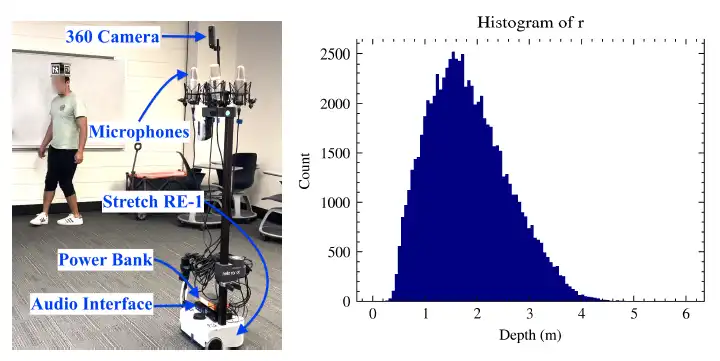Acoustic Detection is emerging as a revolutionary method in the realm of robotics. In an era dominated by technological advancements, robots are swiftly becoming an indispensable part of our daily routines. From healthcare to home assistance, their presence is felt more than ever. However, as their integration into our lives deepens, the need for them to detect and safely interact with humans becomes paramount.
A recent study dives deep into this very aspect, exploring the potential of robots using incidental sounds to detect human presence. This innovative approach paves the way for more intuitive and safer human-robot interactions, potentially transforming how we perceive and interact with these machines.
➜ The Quest for the Un-Kidnappable Robot
The world of robotics is ever-evolving, with innovations aiming to make robots more efficient and attuned to human presence. A groundbreaking study titled “The Un-Kidnappable Robot: Acoustic Localization of Sneaking People” delves into the feasibility of robots detecting humans based solely on the sounds they make, even when trying to be discreet.
➜ The Science Behind Sound Detection
Most robots today rely on visual cues to detect humans. This involves using cameras, lasers, and other spatial-based sensors. However, these methods have their limitations, especially in low-light conditions or when there are obstructions. This study proposes a novel approach: using the incidental sounds produced by humans as they move. Imagine a robot detecting a person’s presence just by the subtle sound of their footsteps or the rustle of their clothing.
➜ Introducing the Robot Kidnapper Dataset
To validate their hypothesis, the researchers introduced the “Robot Kidnapper” dataset. This dataset captures the movements and sounds of 12 participants in various indoor settings. The data includes high-quality audio recordings paired with 360° RGB video, providing a comprehensive view of human movement and the sounds associated with it.
➜ Methodology: Listening Beyond the Noise
One of the significant challenges in this endeavor is distinguishing the incidental sounds of human movement from ambient noise. To address this, the researchers employed a background subtraction method, effectively filtering out irrelevant noises. Additionally, they used an empty room augmentation technique, allowing the model to adapt to different background noises, making it more versatile and accurate.
➜ Seeing the Robot in Action
While the research and data are impressive, seeing the application in real life truly brings the study to life. The researchers implemented their trained model on the Stretch RE-1 robot. This robot, equipped with the model, could track a person using only the incidental sounds they produce, even when they tried to creep.
“The paper investigates the feasibility of detecting people based on the incidental sounds they produce as they move, even when they try to be silent.”
➜ USA’s Take on Robotic Innovations
The USA has always been at the forefront of technological innovations, and this research further cements its position. With tech giants and startups alike exploring the realms of robotics, the introduction of acoustic human detection could be a game-changer. It aligns with the country’s vision of integrating robots seamlessly into various sectors, from healthcare to defense.
➜ NeuralWit’s Perspective
For those keen on staying updated with the latest in tech, NeuralWit offers insights into similar groundbreaking innovations. As robots become more integrated into our daily lives, understanding their capabilities and the science behind them becomes crucial.
The “Un-Kidnappable Robot” study is more than just a testament to the advancements in robotics. It’s a glimpse into a future where robots understand and respond to us in ways we hadn’t imagined. As we stand on the cusp of this new era, one thing is clear: the line between man and machine is blurring, and the future is audibly exciting.




